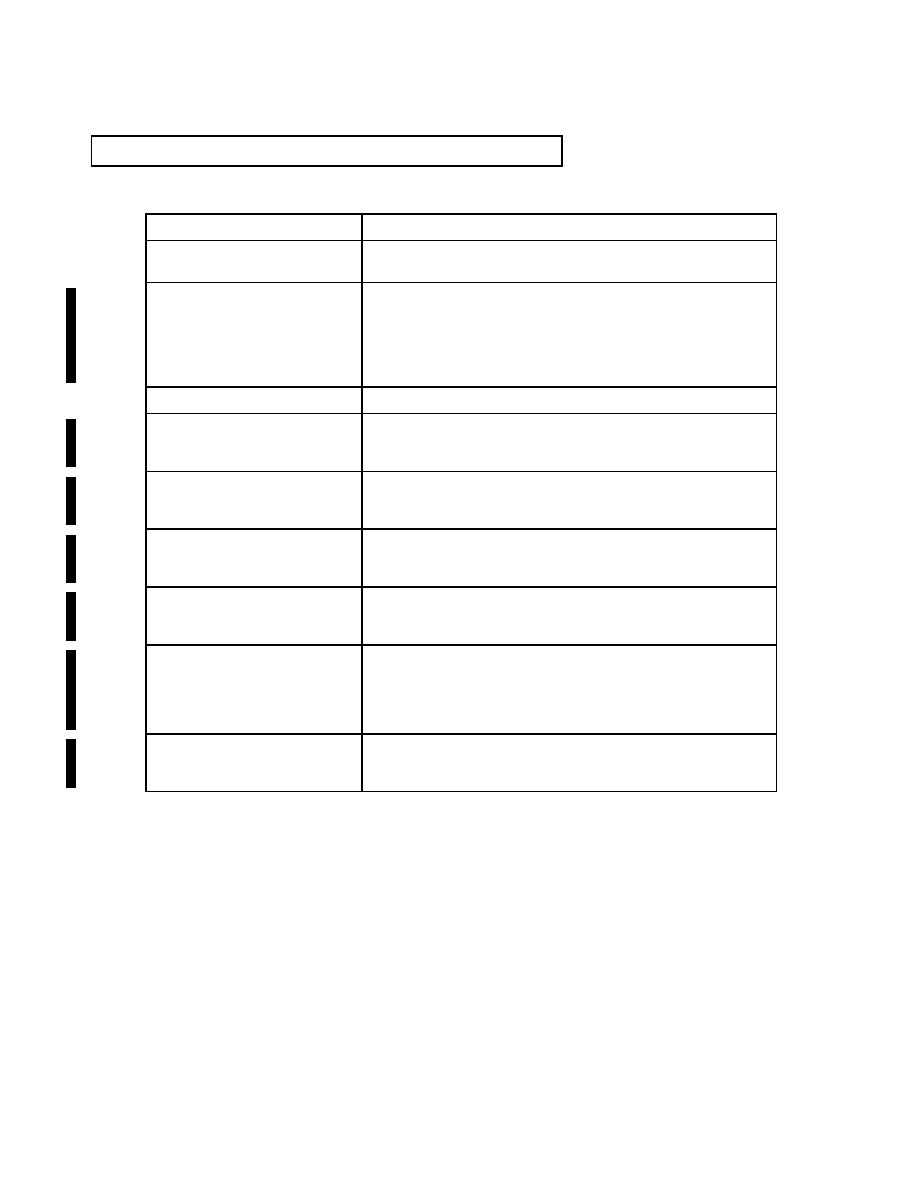
TM 9-3990-260-14&P
10-7.
GENERAL WELDING MAINTENANCE (CONT).
Areas to be Inspected
Acceptable Crack Length Limits
1. Pin Blocks and Center Tube
Less than 1/4 inch (6 mm)
Welds and Parent Material
2. Cross Beams
A crack should be repaired after it has reached 3/4 inch (19 mm).
The total length of cracks on a single crossmember should not
exceed 2 inches (51 mm). When cracks are present on several
crossmembers, action should be taken to repair them at the next
service. If a crossmember is completely missing, repairs should
be made prior to use.
3. Front and Rear Beams
Less than 1/4 inch (6 mm)
4. Main Beams
Cracks in the parent material or welds between the main beams
(Note: Bends to bottom flange
and cross beams cannot exceed 3/4 inch (19 mm).
and main beams are normal.)
5. Twistlocks
Due to the loads twistlocks can see during retrograde transport
mode, any cracks in the twistlock housing should be repaired
before reaching 3/4 inch (19 mm).
6. A-Frame
A crack should be repaired before it has reached 2 inches (5 cm).
The combined length of multiple cracks at any one location
should not exceed 4 inches (10 cm).
7. Hookbar (Welds securing the Cracks should be repaired prior to reaching 1 inch (2 cm) in
hookbar casting on the A-frame). length. The combined length of multiple cracks at this location
should not exceed 1-1/2 inches (4 cm).
8. Multipurpose D-Rings
Due to the high loads that these fittings can see in transport
mode, any crack should be repaired before reaching 1/2 inch (1
cm) in length. The combined length of multiple cracks at any one
location should not exceed 1/2 inch (1 cm). This applies to cracks
present in the adjoining structure also.
9. Decking
The maximum allowable single crack in the deck seams is 6
inches (15 cm) long. When multiple cracks are present, the com-
bined length of the cracks cannot exceed 10 inches (25 cm).
(1)
Acceptable Welding Patterns. Welding patterns conforming to the original manufacturer's
design are acceptable. Only abnormal welding patterns due to damage and/or improper
repair are cause for rejection. Inspection should be directed at looking for broken junc-
tures or welded repairs that are not consistent with other similar welds of the M3A1 CROP.
(2)
Acceptable Splicing. A splice is any repair of a primary structural member that replaces
material without complete replacement of the member. Areas repaired by straightening
and bead welding are not to be construed as splices. Gussets, backup plates or other rein-
forcement (protector) plates are not to be construed as splices. An acceptable splice is a
minimum of 6 in. (15 cm) long and is a butt-welded insert. If a splice would end within 12
in. (30 cm) of another weld, it must be extended to that weld. An acceptable splice is flush
fitting and restores the original size and cross-sectional profile of the repaired component.
Backup plates installed on the backside of a splice are permissible if the backup plate
extends a minimum of 6 in. (15 cm) beyond each end of the splice.

